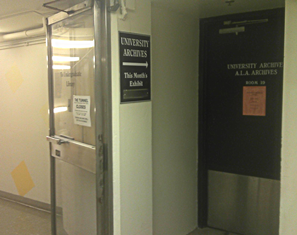Doujin (sometimes spelled dojin), is a phrase of Japanese invention, referring to groups of people with a specific interest. Although it began as literary societies in the Meiji era (1868-1912), modern doujin groups (often translated as Circle in English) refer to those that produce self-published works, which doujin has become an abbreviation for the created works. Such creations can include doujinshi (magazines, comics, or books), doujin soft (software, often games), or even doujin music.

The line into Comiket 77, December 2009.
What’s interesting about the doujin market is that it exists on the grounds of unauthorized exceptions – large majority of doujin works infringes on copyrights. As demand for doujin creations continues to grow exponentially (see What is Comic Market from the official page of Comiket), there is virtually no one pursuing damages for misappropriation or unauthorized usage in Japan.
So, why is that?
As outlined in Lawrence Lessig’s book, Free Culture, it is not an unbelievable situation. The idea of content borrowing, creating a transformed derivative work feels acceptable. And, well, there’s the problem of the lack of resources to prosecute all these infringing creators.
Although many of us may not interact with creations associated with doujin groups, we can relate on another front: User-Generated Contents.
How often have you reached a Youtube video without music (or even completely removed) because of DMCA take downs? Now, the follow-up question is: how often are those new creations through remix, only found on the web? I’m guessing you have at least one or two

Screen shot of the popular Japanese video streaming site Nico Nico Douga playing a video.
in mind. For me, this mashup comes to mind; keep in mind that this creation both came from and still exists on Nico Nico Douga, the leading video streaming site in Japan.
But, there are a variety of reasons why people aren’t flocking to Nico Nico to watch videos that were taken down. There’s the idea of platform familiarity or having an extra account means more privacy concerns. The greatest influence, arguably, is that it’s not hard to imagine an infringing video being put up, time after time, attempting to fly under the radar (a practice many of us are familiar with).
Delving deeper into the remix, user generated, doujin phenomenon just gives more headaches, however. Inherently, this is a multivariate problem intersecting law, culture, internationalization, and digitization. But this copy-remix culture will continue to grow, on a widespread scale, and it will bash against legislation and litigation; it is a part of globalization, a part of connectivity.
Of course, that is not to say that we will always keep policies that doujin or user-generated creations, but it will be a long time before we’re legally used to them.
Note: I highly discourage searching for reference information regarding doujins on popular search engines as the majority of the information yielded will be pornographic. The English word doujin is colloquially used to describe drawn pornography by doujin groups. The best way to finding information regarding the culture is by searching scholarly articles or tracking relevant citations.
Related Resources:
The Anime and Manga Research Circle is a good resource to other scholars about the doujin culture.
There exist some best practices regarding fair use for user-generated content worth reading up on for these services (supported by major corporations) and video creation . There are also many resources within our library on User-Generated Content.
The Doujinshi & Manga Lexicon is a fan maintained database of modern doujinshi produced (entries includes both pornographic and non-pornographic doujinshi).
It may also be useful to read about remix and its culture. For example Remix Theory is a good place to find some focused research on remixes. Searching for remix on the University Library catelogue also yields many resources, such as examples of remix, how to create remixes, as well as analysis of remix theories and culture.






